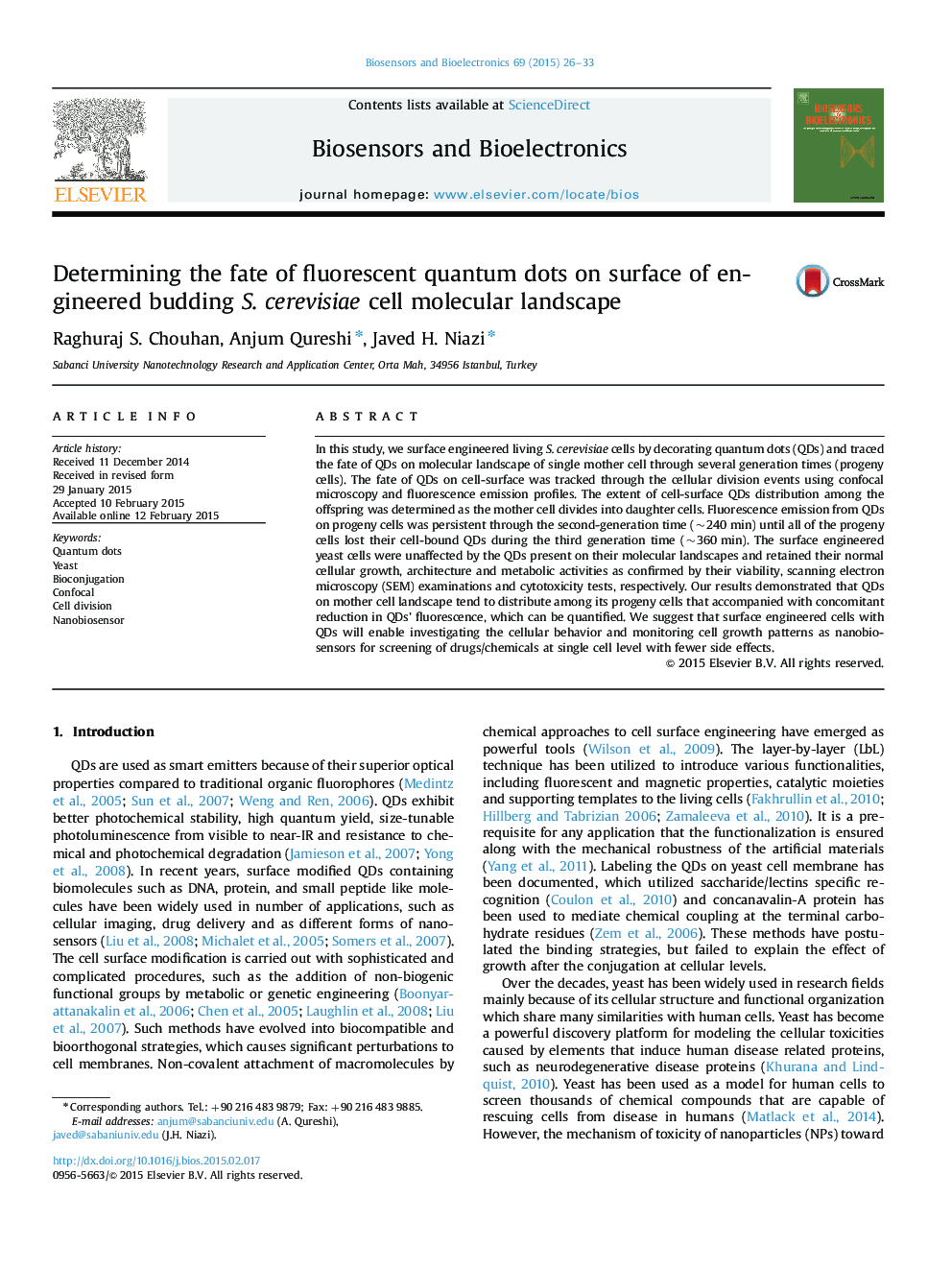| Article ID | Journal | Published Year | Pages | File Type |
|---|---|---|---|---|
| 7232052 | Biosensors and Bioelectronics | 2015 | 8 Pages |
Abstract
In this study, we surface engineered living S. cerevisiae cells by decorating quantum dots (QDs) and traced the fate of QDs on molecular landscape of single mother cell through several generation times (progeny cells). The fate of QDs on cell-surface was tracked through the cellular division events using confocal microscopy and fluorescence emission profiles. The extent of cell-surface QDs distribution among the offspring was determined as the mother cell divides into daughter cells. Fluorescence emission from QDs on progeny cells was persistent through the second-generation time (~240Â min) until all of the progeny cells lost their cell-bound QDs during the third generation time (~360Â min). The surface engineered yeast cells were unaffected by the QDs present on their molecular landscapes and retained their normal cellular growth, architecture and metabolic activities as confirmed by their viability, scanning electron microscopy (SEM) examinations and cytotoxicity tests, respectively. Our results demonstrated that QDs on mother cell landscape tend to distribute among its progeny cells that accompanied with concomitant reduction in QDs' fluorescence, which can be quantified. We suggest that surface engineered cells with QDs will enable investigating the cellular behavior and monitoring cell growth patterns as nanobiosensors for screening of drugs/chemicals at single cell level with fewer side effects.
Related Topics
Physical Sciences and Engineering
Chemistry
Analytical Chemistry
Authors
Raghuraj S. Chouhan, Anjum Qureshi, Javed H. Niazi,
